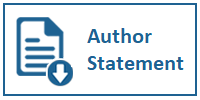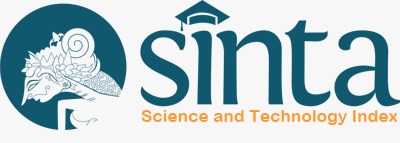Reality and Hyperreality Behind the Kidfluencer Phenomenon
DOI:
https://doi.org/10.31937/ultimacomm.v14i2.2743Keywords:
Baudrillard, children, hyperreality, kidfluencer, social mediaAbstract
Apart from being a medium of communication, social media is also a place for some people to earn money. Not only adults, but children are also present on social media as objects to make money by becoming kidfluencers or child influencers. This becomes a controversy because social media platforms limit their users by age rules to avoid various dangers and negative impacts lurking that will create impact on children in the future. However, parents and relatives of the kidfluencers choose to neglect and continue breaking the rules on social media so their children could be kifdluencers. This study aims to examine the phenomenon of kidfluencers and their relation to the hyperreality theory by Jean Baudrillard. By becoming kidfluencers, these children are displayed in such a way on social media complete with their cuteness on daily basis that eventually invite various responses from their followers and influence them in most of the things they do. Yet, the actual reality does not always match what is present on social media. With a qualitative method, this phenomenon is then investigated to find out that what the kidfluencers show is not the actual reality, but only a representation that refers to themselves, not to others.
Downloads
References
Baudrillard, J. (1994). Simulacra and simulation. University of Michigan press.
Berelson, B. (1952). Content Analysis in Communication Research. Free Press. https://books.google.co.id/books?id=MvloAAAAIAAJ
Bourdieu, P., & Richardson, J. G. (1986). Handbook of Theory and Research for the Sociology of Education. The Forms of Capital, 241, 258.
Burnard, P. (1995). Interpreting text: An alternative to some current forms of textual analysis in qualitative research. Social Sciences in Health, 1(4), 236–245.
Eco, U. (1986). Travels in hyperreality (trans. W. Weaver). London: Picador.
Juntiwasarakij, S. (2018). Framing emerging behaviors influenced by internet celebrity. Kasetsart Journal of Social Sciences, 39(3), 550–555. https://doi.org/10.1016/J.KJSS.2018.06.014
Kapanlagi. (2020). Protes dan Tak Mau Dijadikan Konten, Rafathar Pernah Ucapkan Kalimat Menohok Buat Raffi Ahmad. Kapanlagi. https://www.kapanlagi.com/showbiz/selebriti/protes-dan-tak-mau-dijadikan-konten-rafathar-pernah-ucapkan-kalimat-menohok-buat-raffi-ahmad-048619.html
Kemp, S. (2022). Digital 2022: Global Overview Report ” DataReportal – Global Digital Insights. We Are Social. https://datareportal.com/reports/digital-2022-global-overview-report
Khamis, S., Ang, L., & Welling, R. (2017). Self-branding, ‘micro-celebrity' and the rise of Social Media Influencers. Celebrity Studies, 8(2), 191–208. https://doi.org/10.1080/19392397.2016.1218292
Long, T., & Johnson, M. (2000). Rigour, reliability and validity in qualitative research. Clinical Effectiveness in Nursing, 4(1), 30–37.
Maheshwari, S. (2018). Are You Ready for the Nanoinfluencers? - The New York Times. New York Times. https://www.nytimes.com/2018/11/11/business/media/nanoinfluencers-instagram-influencers.html
Martell, K. (2020). Trend Lightly: Keeping Up with Kidfluencers. Traackr.Com. https://www.traackr.com/blog/trend-lightly-keeping-up-with-kidfluencers
Martineau, P. (2019). What's an Influencer? The Complete WIRED Guide | WIRED. Wired.Com. https://www.wired.com/story/what-is-an-influencer/
Masterson, M. (2020). When play becomes work: child labor laws in the era of "Kidfluencers.” University of Pennsylvania Law Review, Forthcomin. https://ssrn.com/abstract=3650376
Mercer, D. (2019). The rise of the "kidfluencer”: how online fame impacts children's mental health. The National News. https://www.thenationalnews.com/lifestyle/family/the-rise-of-the-kidfluencer-how-online-fame-impacts-children-s-mental-health-1.940531
MÅ‚odkowska, B. (2019). Influencers on Instagram and YouTube and Their Impact on Consumer Behaviour. 2019, 4–13. https://doi.org/10.7172/2449-6634.jmcbem.2019.1.1
Mosco, V. (2009). The Political Economy of Communication. SAGE Publications. https://books.google.co.id/books?id=3y-odW8aec4C
Nabilla, F. (2021). Raffi Ahmad Ungkap Hasil Endorse Anak, Jumlahnya Kayak 10 Tahun Kerja. Suara. https://www.suara.com/entertainment/2021/12/08/152423/raffi-ahmad-ungkap-hasil-endorse-anak-jumlahnya-kayak-10-tahun-kerja
Piliang, Y. A. (2010). Semiotika dan hipersemiotika: kode, gaya & matinya makna. Matahari.
Sadrabadi, A. N., Sadrabadi, A. N., Saraji, M. K., & MonshiZadeh, M. (2018). Evaluating the Role of Brand Ambassadors in Social Media. Journal of Marketing Management and Consumer Behavior, 2(3). https://journal-of-marketing-management-and-consumer-behavior.com/index.php/JMMCB/article/view/102
Yuan, S., & Lou, C. (2020). How Social Media Influencers Foster Relationships with Followers: The Roles of Source Credibility and Fairness in Parasocial Relationship and Product Interest. Journal of Interactive Advertising, 20(2), 133–147. https://doi.org/10.1080/15252019.2020.1769514
Zompetti, J. P., & Moffitt, M. A. (2009). Revisiting concepts of public relations audience through postmodern concepts of metanarrative, decentered subject, and reality/hyperreality. Journal of Promotion Management, 14(3–4), 275–291.
Downloads
Published
How to Cite
Issue
Section
License
Ultimacomm Jurnal Ilmu Komunikasi allows readers to read, download, copy, distribute, print, search, or link to its articles' full texts and allows readers to use them for any other lawful purpose. The journal allows the author(s) to hold the copyright without restrictions. Finally, the journal allows the author(s) to retain publishing rights without restrictions
1. Authors are allowed to archive their submitted article in an open access repository
2. Authors are allowed to archive the final published article in an open access repository with an acknowledgment of its initial publication in this journal














